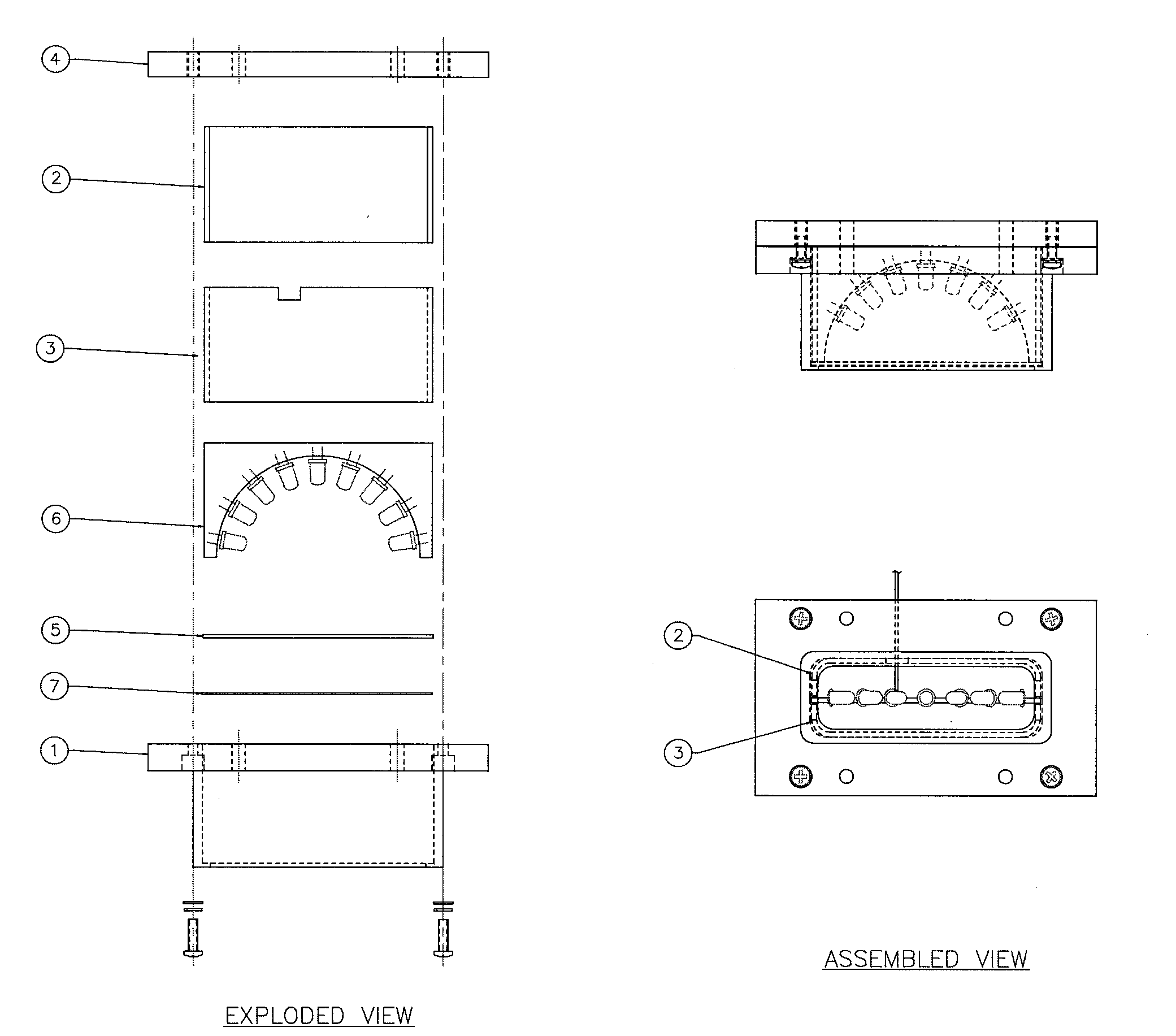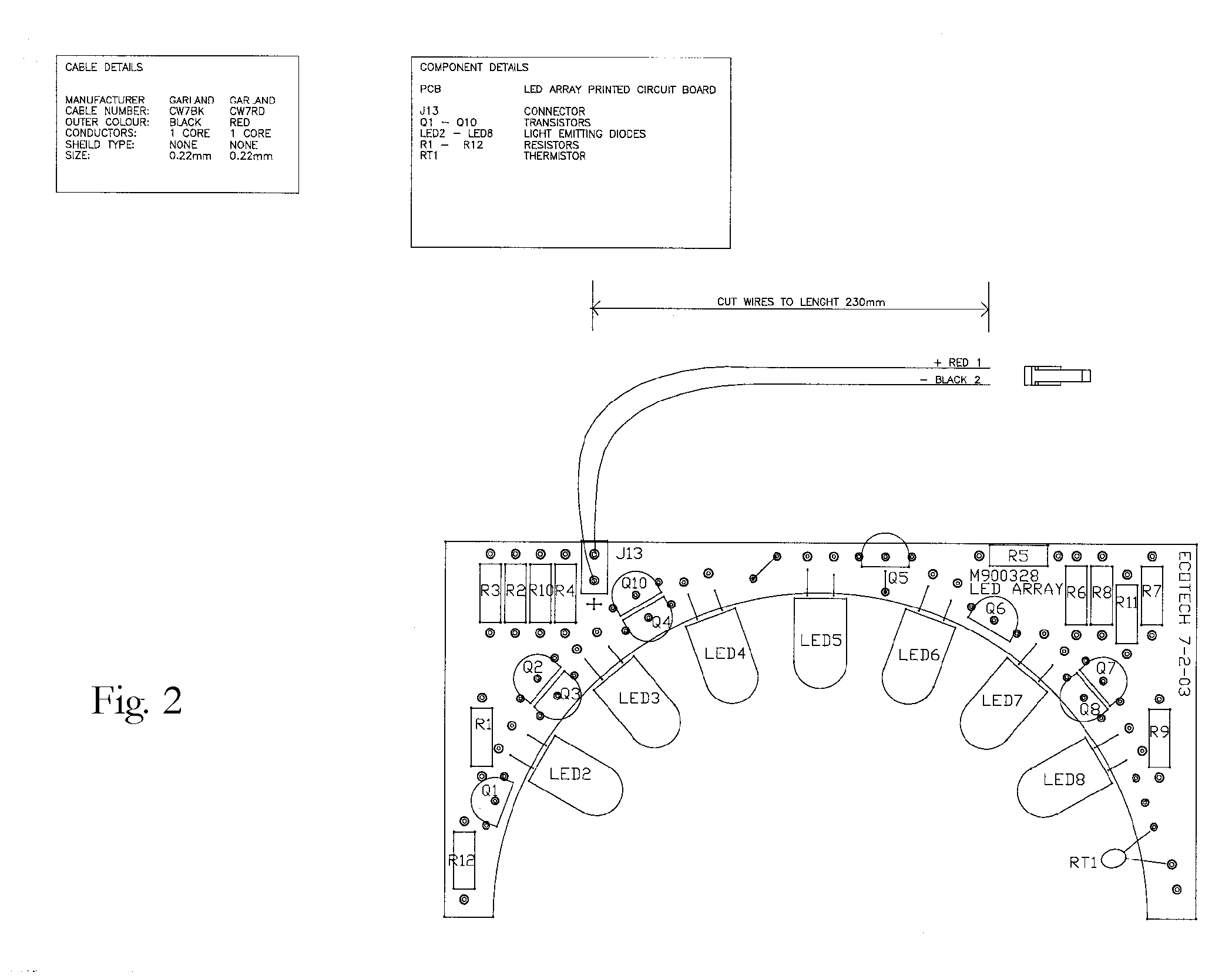Means of Achieving a Lambertian Distribution Light Source via a Light Emitting Diode Array
a technology of light emitting diodes and distribution light sources, which is applied in the direction of instruments, material analysis, light and heating apparatus, etc., can solve the problems of less accurate, prone to regular maintenance requirements of lamps, and expensive replacement, so as to improve the accuracy of light scattering measurement and the effect of increasing the flash length capacity
- Summary
- Abstract
- Description
- Claims
- Application Information
AI Technical Summary
Benefits of technology
Problems solved by technology
Method used
Image
Examples
Embodiment Construction
—FIG. 1 TO 5
[0027]FIG. 1 shows a side by side exploded front view, assembled view, and sectioned view of the LED array inside the housing. The LEDs are arrayed in a semi-circular arrangement on an LED Array Printed Circuit Assembly (PCA) 06. The PCA is mounted inside the Light source Housing 01, comprised of a PCA Mounting Bracket Top 02, PCA Mounting Bracket Bottom 03, and Housing Top Plate 04. A Light Source Diffuser 05 and Diffuser Sealant 07, are also incorporated.
[0028]FIG. 2 is a technical top view illustrating the LED array printed circuitry assembly, that is used to control each independent LED within the array. The Light source consists of seven Light Emitting Diodes (LED) of a very high output intensity (often called super bright LEDs). These LEDs are chosen for not only their very bright output, but also their wavelength (or colour). The wavelength output (typically 525 nm) is very stable and should not vary by more than 30 nm. Other wavelengths can be achieved by using ...
PUM
| Property | Measurement | Unit |
|---|---|---|
| wavelength | aaaaa | aaaaa |
| wavelength | aaaaa | aaaaa |
| wavelength | aaaaa | aaaaa |
Abstract
Description
Claims
Application Information
 Login to View More
Login to View More - R&D
- Intellectual Property
- Life Sciences
- Materials
- Tech Scout
- Unparalleled Data Quality
- Higher Quality Content
- 60% Fewer Hallucinations
Browse by: Latest US Patents, China's latest patents, Technical Efficacy Thesaurus, Application Domain, Technology Topic, Popular Technical Reports.
© 2025 PatSnap. All rights reserved.Legal|Privacy policy|Modern Slavery Act Transparency Statement|Sitemap|About US| Contact US: help@patsnap.com



